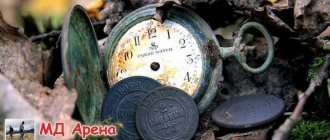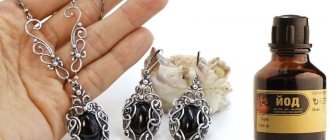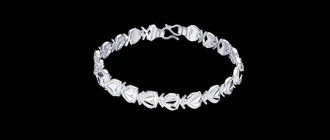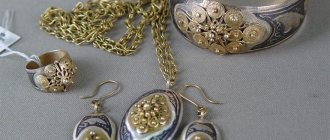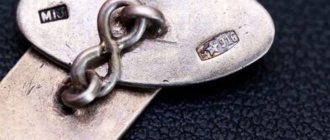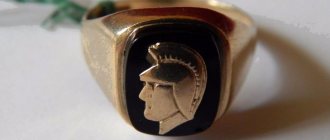The goddess Juno from Ancient Rome gave us not only the name of the sixth calendar month “June”, but also the familiar word “coin”. True, here we are talking about the second name of the goddess, which not everyone suspects. The phrase “Juno Moneta” can mean either Juno the Adviser or Juno the Warning. The goddess was required to notify people in advance about upcoming earthquakes or the approach of enemy armies. Well, numismatists are close to the very concept of “coin”. The Roman Empire remained in the pages of history a long time ago, but the word is still in our vocabulary.
The monetary circulation of Ancient Rome began with the help of something that a resident of the modern world would never accept as a coin. Initially, the role of the universal exchange equivalent, that is, money, was performed by bronze ingots. At the first stage it was almost unprocessed bronze. In the language of specialists, such an ancient means of payment is called “Aes rude”. Servius Tullius - it is this ruler who is designated in the legends as the reformer who began minting what we now call “coin”. Historians refute the authenticity of his feat, because the reign of Servius Tullius fell on 578-535 BC, which corresponds to the circulation of ingots. Therefore, the only credit given to Servius Tullius is that he ordered the ingots to be shaped into squares or rectangles. Images of animals were embossed on the ingot. There you could see a bull or a sheep, which refers to the times when livestock served as units of account. Such “money” is already called “Aes signatum” (“stamped bronze”, which coincidentally coincides with the modern word “assignment”).
Cast bronze coins of Ancient Rome
Harold Mattingly, in his book “Coins of Rome,” indicated the appearance of the first coins in 312 BC, supported by information that in 289 BC there was already an institution of monetarii (a collection of coin triumvirs - officials, each of whom was responsible for their own metal). This money was called “Aes Grave”, which is translated from Latin as “heavy bronze”. The unit of account was called “Ass” and weighed exactly one libra (the distant, distant ancestor of the Italian lira). It is believed that the first coins were cast in the Temple of Juno. But it was not very convenient to use them, because the libra was then equal to two hundred and seventy-two grams. The etymology of the word "ass" takes us back to the Greek language, where its meaning was "one." The ass was divided into halves (semis), thirds (triens), quarters (quadrans), sixths (sextans) and twelfths (the familiar word “ounce”). And immediately the monetary unit began to “lose weight.” By 89 BC, the weight of the assa was already twenty-fourth of the libra.
Interesting Facts
- In 379-395 The solidus of Theodosius was equal to 7200 nummii, and with this money one could buy 30-40 modii of wheat, and under Theodoric for 1 gold solidi one could already buy 60 modii of wheat. It is also a known fact that a cavalryman’s salary per day was 180 nummii, that is, recalculated for a month and a half, he received 1 gold solid.
- “Solid” translated from English means “stable, genuine”, and “sold” translated from English means “sold”, hence “soldier” - “soldier”. In German, “sold” is “army pay,” which is where the Russian word “soldat” comes from.
- In addition to the denomination of 1 solidi, for the anniversary of the reign of the current emperor or victory, multiple denominations of solidi were minted: 1/2 solidi (semis), 1/3 solidi (tremis or triens) and 5/1 solidi, which were called medallions, but they were not in circulation.
Full weight coins of Ancient Rome made of bronze and silver
Silver denarii, the name of which is almost always heard when talking about Ancient Rome, appeared in 268 BC. The weight unit that formed the basis was called “scruple”. The first denarii weighed four scruples, which by modern standards is equal to 4.55 grams. One denarius was equal to ten asses, which then completely coincided with the correspondence of the value of the copper from which the asses were made to silver. Hence the name of the coin (“consisting of ten”) and its symbol “X,” the Roman numeral for ten. The aces were minted with a vertical line “I” - a Roman unit. Larger denominations also bore a digital designation. It's a different matter with small things. The ounce was designated by the most common dot, and the semis by the letter “S”. In 209 BC, a golden glimpse occurred among the silver and copper stars on the coin horizon. The first gold coins enter circulation . However, their release was quickly curtailed.
We can create a kind of pantheon of gods by laying out the coin series of those times. The two-faced god Janus was present at the assa, the head of Saturn adorned the semis, one of the patrons of Rome - the goddess Minerva appeared helmet-shining on the triens, the quadrans had the head of Hercules, the sextans carried the head of Mercury. And finally, the ounce depicted the goddess Roma, who can still be seen seated on the Capitoline Hill.
Already in 217 BC, in connection with the outbreak of the Second Punic War, the denarius was devalued, reducing its weight to three scruples. But we shouldn’t forget that the ace’s weight was steadily falling. Therefore, one denarius now went for sixteen asses, but he did not change his name. The exception is the short period from 150 to 145 BC, when the number XVI still appears on some coins, but after that there is a return to the usual ten, but it may be present in a “crossed out” state. After 110 BC, the number “X” leaves the coin design, giving way to plot drawings or portraits. Popular denominations of the time include the quinarius (five asses), the victoriat (most often outside Rome) and the quarter denarius, which received a compound name from the word for “one and a half” - sestertius (“semis” and “tertius” are added together to form the name of the coin , which literally translates as “half of three”).
Price
On sale you can often find Roman coins issued after the 3rd-4th centuries AD. They are not as valuable as the monetary symbols of Ancient Rome, but they can also cost about $50.
The price of denarii, solidi, etc. directly depends on what metal they are made of. Another parameter is the timing of issue: the more ancient the coinage or casting, the more difficult it is to acquire them. Products of their bronze or copper can be bought for 50-100 dollars, and issues later than the 3rd century AD are cheaper, especially if they are not preserved in good condition and are worn out. The worse the design and letters are visible, the more this affects the cost. As a rule, Roman coins are sold individually; it is not possible to buy a collection at once.
Specimens such as the golden aureus appear on sale very rarely and go from well-known auctions for tens of thousands of dollars.
Coins of the Roman Empire
The first reformer here was Octavian Augustus. Gold is returned to circulation in the form of aureus, equal to twenty-five denarii. The material for issuing coins, which used to be copper, is changing. Now quadrans is minted from bronze, and the aurihalc alloy becomes the basis for the production of sestertium and its half - dupondium. Aurichalcum , whose beautiful name suggests the word “gold,” had nothing to do with noble metals. This is the brass we know with a high zinc content. Only its color evoked thoughts of gold. Historians deduce a clear hierarchy of denominations, building a pyramid, at the top of which is an aureus, which is twenty-five denarii, or a hundred sesterces, or two hundred dupondii, or four hundred asses.
The territorial conquests of Rome were also reflected on the coins that the state minted during its heyday. On the denarii we could see, for example, a Gallic shield, symbolizing the subject lands of France. Or the conquered Balkans, as evidenced by the coin, on one side of which Victoria’s head is minted, and on the other, the god of war Mars examines the spoils of war.
After takeoff, there is usually a fall, which occurred during the reign of the famous Emperor Nero. The empire's economy began to falter, and coins gradually began to lose weight. The apotheosis of the collapse was the period when denarii were minted from copper, plated with silver for decency. Constantine I the Great made a change for the better by introducing high-grade gold solidus into circulation and pegging the cost of silver coins to the cost of a pound of gold. The innovations turned out to be so successful that they did not disappear even after the collapse of the Western Roman Empire, since this system was adopted by Byzantium, which was formed on the lands of the Eastern Roman Empire.
The goddess Juno still fulfills her purpose today. An incredible number of people, when making a decision, continue to flip a coin in order to choose one option or another, depending on the side that appears. Therefore, any case of such a choice can be included in the category of decisions suggested by Juno the Adviser.
Design development
Portrait images on coins of the Roman Empire are most often turned to the right , although turning the head to the left was common on coins of some periods. There were emperors who simultaneously minted coins with both right and left profiles. Some solidi from different periods of coinage contain full-face images of emperors.
The most common type of portrait image is the image of a bust with a laurel wreath on the head, which is tied with a ribbon at the back of the head. It is worth noting that on such coins this part of the portrait is erased most quickly.
The image of a head wearing a diadem is quite rare and is found on coins minted from the late imperial period. Later they began to depict a pearl diadem, which consisted of a double row of dots.
Often on solidi and other types of coins one can find images of an imperial bust in a military helmet, confirming the role of the emperor as a military leader.
Solidas were also minted with the image of two portraits at once, which spoke of the joint reign of two emperors at once. Examples of such coins are the solidus of 610-641. coinage of Heraclius and Constantine, as well as solidi of 654-659. coinage of Constantine II and Constantine IV.
Personifications on coins
- ABUNDANCY – abundance;
- ANNONA – cereal yield;
- BONUS EVENTUS – favorable ending of the case;
- VIRTUS – masculinity, valor;
- SEASONS;
- GENIUS is the guardian spirit of people, families, groups of individuals, troops, settlements and states;
- GEOGRAPHICAL PERSONIFICATIONS;
- GILARITAS - fun;
- GLORIA - glory;
- GONOS – honor;
- INDULGENCE - indulgence, mercy;
- ITALY;
- KVIES - peace, tranquility;
- CLEMENTIA - the emperor's condescension and mercy;
- CONCORDIA - agreement;
- CONSTANCE – constancy;
- LETETIA - joy;
- LIBERALITAS - unselfishness, generosity;
- LIBERTAS - freedom;
- COIN – coinage;
- NOBILITAS - nobility, generosity;
- PAX - peace;
- PATIENCE – patience;
- PERPETUITAS - eternity;
- PIETAS - fidelity to duty;
- PROVIDENCE - foresight, divine providence, the emperor's care for the throne and empire;
- PUDITIA - modesty, chastity;
- SAEKULO FRUGIFERO – fertile age;
- SECURITAS – public and personal safety;
- SPES – hope;
- TRANQUILLITAS – peace;
- FECUNDITAS – fertility;
- FELICITAS - happiness, success;
- FIDEZ – loyalty;
- EQUITAS - justice;
- ETERNITAS - eternity;
- JUBERTAS – fertility;
- JUSTICE - justice.
Abbreviations of titles and positions on coins
- COS ITER (CONSVL ITERVM) – “consul for the second time”;
- COS ITER ET TER (CONSVL ITERVM ET TERTIVM) – “consul for the second and third time”;
- DIC, DIC PER (DICTATOR, DICTATOR PERPETVVS) – “dictator, permanent dictator”;
- DN, D NOST (DOMINVS NOSTER) – “our master”;
- DV, DIV, DIVO (DIVVS) – “Divine”;
- FEL (FELIX), PF, P FEL (PIVS FELIX) – “happy”, “pious”;
- F (FILIVS), N (NEPOS), PRON (PRONEPOS) – “son”, “grandson”, “great-grandson”;
- GERM (Germanicvs), DAC (Dacicvs), PARP, PARTH (Parthicvs), AFR (Africanvs), ARAB (Arabicvs), ARM (Armeniacvs), BRIT (Britannicvs), SARM (Sarmathicvs) - “Germanic, Dacian, Parthian”;
- VICTOR – “winner”;
- I, IM, IMP (IMPERATOR) – “emperor”;
- IMP ITER (IMPERATOR ITERIVM) – “emperor for the second time”;
- INV (INVICTVS) – “invincible”;
- MAX (MAXIMVS) – “greatest, great”;
- N (NEPOS) – “grandson”;
- NC, NOB C, NOB CAES (NOBLE CAESAR) - means the successor of the emperor;
- N, NOST (NOSTER) – “our”;
- P (PIVS) – “pious”;
- PP (PATER PATRIAE) – “father of the fatherland”;
- PERP (PERPETVVS) – “eternal”;
- PONT MAX, PM (PONTIFEX MAXIMVS) – “the great pontiff, high priest, head of the college of pontiffs.”
Characters of ancient mythology on coins of the Roman Empire
Roman mythology is inextricably linked with Greek, which is reflected in the symbolic images of obverses when minting coins:
- Apollo – son of Zeus;
- Venus – goddess of gardens;
- Vesta - goddess of the sacred hearth;
- Victoria - goddess of victory;
- Hercules - the personification of strength and heroism;
- Isis – goddess of sky and love;
- Cupid is the god of love and friendship;
- Mars is the god of war;
- Neptune is the god of the water element;
- Pluto – god of the underworld;
- Roma is the personification of Rome;
- Romulus - founder of Rome;
- Salt is the sun god;
- Tellus – goddess of the earth;
- Phoenix is a symbol of rebirth;
- Fortune – goddess of happiness, success;
- Juno – goddess of marriage, motherhood;
- Jupiter is the god of the sky, thunderstorms, light;
- Janus is the god of beginnings.
Archaeological finds from the gold of Rome
In 93 of the 20th century, in the city of Trier, archaeologists found a cauldron with gold coins of Ancient Rome. Until now, this find is considered the largest in the world in terms of the number of gold coins. The weight of the entire find is about 20 kilograms, the number of coins is more than 2,500 pieces, and the weight of one coin is more than 7 grams of gold. All coins are made of almost pure 980-carat gold.
The latest coin found was minted around 196, and the oldest coin is believed to be from 63 years old.
More than half of the coins found were minted during the reigns of Nero, Vespasian and Titus. The obverses of the coins depict various emperors and their wives.
Scientists suggest that this find was accumulated by the owner for more than 100 years, because the range of their production is almost a century.
What influenced the emergence of gold monetary units
The Romans were forced to produce coins from gold, because several factors contributed to this:
- a large amount of gold that was seized in Gaul;
- it was necessary to maintain the army of the country, which was very numerous, where the payment was the gold of Rome in the form of manufactured coins.
All control over the production of coins was carried out by the ruler himself. The best craftsmen were assembled to cut out the template for the coins. Therefore, each coin was the entire property of the state. AVREVS was considered the highest denomination, which is why only wealthy Romans used this coin. With the help of coins it was possible to buy real estate, slaves and other especially valuable things. For example, the cost of a good slave was about 19 AVREVS, which in weight is more than 140 grams of gold.
By the beginning of the 2nd century, the salary of an ordinary soldier was 2 AV.QVINARIVS, which is equal to one AVREVS. It was convenient for the military to receive money for their work in the form of coins, because they always carried everything they earned with them, and their salary had a name - “scholarship.” A foreman had a salary approximately twice that of an ordinary soldier, and a centurion received at that time 5 AVREVS, which was considered a fairly decent income at that time. To maintain an army of 10,000 soldiers, the empire spent about 1,500 kilograms of gold in one month. Over the years, the number of armies in Rome varied from 20 to 30, each legion numbered at least 8,000 soldiers, the largest had a strength of 12,000 people.
A large number of gold coins of Rome from ancient times have survived to this day. Archaeologists discovered the most significant treasure in the last century in the city of Trier; it amounted to more than 2,500 Roman gold coins.


